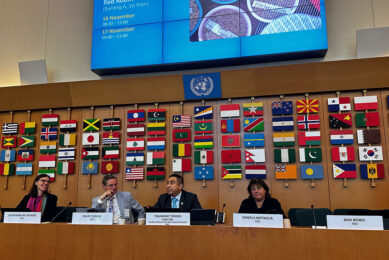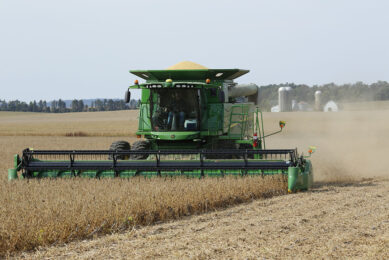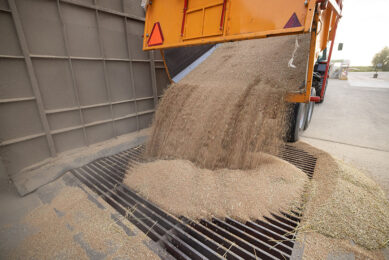Legislation hinders use of in-feed bugs

Recently I have been attacked by insects, not literally by the animal, but by information surrounding these bugs and their use as a valuable ingredient in animal and human diets. However, legislation is not that fast and their use in animal diets is still prohibited.
The FAO estimates that the world needs to increase its food production by 70% by 2050 in order to serve a global population of nine billion. Animal feed production is increasingly competing for resources (land, water and fertiliser) with human food and fuel production, urbanisation and nature. 70% of the world’s agricultural land is already directly or indirectly dedicated to meat production. With a growing world population and increasingly demanding consumers, can we still produce sufficient animal protein in the future? We need to identify alternative protein sources with urgency, and insects have great potential in contributing to global food security.
Legislation issues on insects as feed
However, the production, trade and use of edible insects as food and feed touch on a wide range of regulatory areas, from product quality assurance to the environmental impact of insect farming. Consequently, one of the largest barriers to increasing consumption of edible insects, as well as their use as animal feed, is legislation. Regarding inclusion in animal diets, does insects fall in the same category as blood meal and fishmeal for example and what are the rules concerning using animal products for growing the insects? Currently, insects cannot be grown on animal based media and manure. A lot of questions are still unanswered regarding the use of insects in the feed of production animals. Insects can be used in food for pets. In addition, some EU legislation hinders the use of insects in animal diets. Think of the TSE legislation and the rules regarding the use of animal by-products.

The whitepaper on insects contains valuable information on the advantages and disadvantages of insects in animal feed. It also gives you a clear view on the current legislations and the changes that need to be made. Why are insects not allowed in animal feed?
Discussion paper
Many groups of experts gather to clarify these topics. The International Insect Centre is a great example. It serves a platform for anyone involved in the commercial production of insects. This centre wants to gather knowledge about issues such as quality control, legislation and consumer acceptance regarding the use of insects in feed and food. Also the FAO is very active in the discussion. It published a discussion paper, which provides a preliminary look at the regulations on the regulatory frameworks influencing insects as food and feed at international, regional and national levels. This study, however, is not exhaustive. It is a dynamic document which is open to suggestions from experts.
How to process insects for feed?
The practical aspects of using insects in animal feed (including storage, quality, processing etc) is also being investigated by a number of companies and research institutes. I recently visited the recently opened Feed Design Lab in the Netherlands, and testing insects in feed is one of their main priorities for the coming months. How are flies and meal worms holding when you heat them during the feed process and what is the best and most practical way to include them in the feed? All questions that need to be answered before its use can really take off. Also recently introduced, the first scientific journal on the use of insects in food and feed. The ‘Journal of Insects as Food and Feed’ will cover edible insects from harvesting in the wild through to industrial scale. At the end of the edible insect food or feed chain, marketing issues, consumer acceptance, regulation and legislation pose new research challenges.

Read: “Turning flies into valuable feed protein in South Africa”
Insects are slowly finding their way into feed formulation and should be processed into valuable feed ingredients. A South African company recently opened a new factory to do just that.
Large scale production
But it all starts with the production of the ability to grow insects on a large scale. Over the past five years insect production facilities have increased significantly, especially in Europe, North America, China, South Africa and Thailand but they are still not very big. I visited an insect producing farm in the Netherlands (Kreca).
Join 26,000+ subscribers
Subscribe to our newsletter to stay updated about all the need-to-know content in the feed sector, three times a week. Beheer
Beheer









 WP Admin
WP Admin  Bewerk bericht
Bewerk bericht